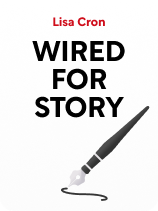

This article is an excerpt from the Shortform book guide to "Wired for Story" by Lisa Cron. Shortform has the world's best summaries and analyses of books you should be reading.
Like this article? Sign up for a free trial here.
What’s any story really about—regardless of its plot? What function does conflict serve in a narrative?
Writer Lisa Cron contends that stories are about how we, rather than the world around us, change. That change is driven by conflict. Humans are wired to resist both conflict and change. But, ultimately, we know that this is how anything moves forward.
Keep reading to learn about the element of conflict in a narrative.
Conflict in a Narrative
What a story’s truly about is how the protagonist changes as a result of the story’s events. Plot is the external events of the narrative, while the story is about the protagonist’s internal reactions.
To start your protagonist on their journey, you need to pinpoint the moment when a central view they held about the world was challenged or altered. Cron explains that, according to neuroscientific research, our understanding of the world isn’t representative of how the world is, but of how we believe it is. To develop a strong internal goal, something must happen to your protagonist that contradicts a belief they hold about the world. This is the introduction of the element of conflict in a narrative, as this opposition must create a struggle in the protagonist that interferes with what they want to achieve. This resulting conflict will lead to your protagonist’s change or growth as a human.
Cron also explains that, since our brains use stories to help us imagine future hardships and difficulties that could interfere with our goals, you shouldn’t coddle your protagonist by keeping them out of trouble or protecting them from the plot. Instead, you should put them into situations that seem impossible to overcome—but aren’t—and show the reader the protagonist’s grueling, painful journey to achieving their internal goal. According to Cron, great stories are about how people change, and change is painful. This means your protagonist will suffer, and because we relate so closely to our characters, Cron says this is often a difficult thing for writers to do, but it’s also what makes a great story.
Stories are about change, and conflict is what drives change. According to Cron, our brains are programmed to resist conflict. We evolved to cooperate for survival, so conflict with others poses a risk to our survival—and in fact, according to an MRI study, conflict causes the brain areas associated with physical pain to light up.
Our brains also resist change, whether it’s a good or bad change. We evolved to seek to maintain a state of secure equilibrium to ensure our well-being—if we’ve found a routine that keeps us safe, making a change to that routine creates a potential risk to our safety, which makes us fearful.
(Shortform note: Conflict and change don’t just cause us pain: Because we perceive them as a threat, they actually activate the body’s stress response (also known as the fight or flight response), putting us into a state of arousal that can be harmful in the long-term. Learning how to better handle conflict and change (for example, by reading fiction) can reduce our stress. Additionally, viewing the change in your life as if you’re the protagonist in a story can make it easier to process and handle conflict and change.)
However, because things constantly change in life despite our wish for them not to, stories must also be about conflict and change. Cron writes that there are many potential sources of conflict in a story: Any way you can find to pit two forces against each other in a way that impacts the protagonist emotionally and interferes with their goal is a potential conflict and impetus for change. Some of these include the conflict between the protagonist’s belief and reality, the conflict between what the protagonist wants and what others expect of them, the conflict between the protagonist’s internal and external goals, and the classic conflict between the protagonist and the antagonist.
| Characters Who Don’t Change, and Stories With Little Conflict While change is a vital aspect of story, not all characters change. Characters who do change throughout a story are called dynamic characters, but those who remain the same are called static characters. Static characters tend to be secondary, and they can be useful in highlighting the changes that the dynamic characters undergo. People are more invested in dynamic characters because it’s easier to relate to characters who change since, as Cron mentions, we’re also constantly changing. Additionally, not every story features the types of extreme conflict Cron mentions. A popular sub-genre of manga and anime known as iyashikei (literally, “healing”) offers stories that are designed to soothe the reader or viewer with plots that have low-stakes conflict and mellow themes. Characters in these stories can still face conflict and go through changes, but usually without the greater stress that accompanies more extreme conflict in other stories. |

———End of Preview———
Like what you just read? Read the rest of the world's best book summary and analysis of Lisa Cron's "Wired for Story" at Shortform.
Here's what you'll find in our full Wired for Story summary:
- How humans have a neurological need for stories
- The formula that the human brain expects to encounter in a story
- How to build a protagonist that engages your reader






